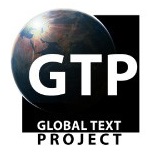Textbook Objectives
What is an objective? An objective is a goal that helps to drive your teaching instruction. These objectives help you and your students to stay focused on the goal. Objectives are written in most textbooks and they are created for teachers to use to guide their instructional planning. There are benefits to these objectives and there are drawbacks.
| Benefits of Textbook Objectives |
Drawbacks of Textbook Objectives |
| They are tied to the content in the text |
They are not tied to your unique students |
| They are usually well-written and clear |
They are not always S.M.A.R.T. (specific, measurable, appropriate, relevant, and time-bound) |
Resources for Instructional Planning
The terms curriculum framework and curriculum guide sometimes are used almost interchangeably, but for convenience, we will use them to refer to two distinct kinds of documents. The more general of the two is curriculum framework, which is a document that explains how content standards can or should be organized for a particular subject and at various grade levels. Sometimes this information is referred to as the scope and sequence for a curriculum.
A curriculum framework document is like a standards statement in that it does not usually provide a lot of detailed suggestions for daily teaching. It differs from a standards statement, though, in that it analyzes each general standard in a curriculum into more specific skills that students need to learn, often a dozen or more per standard.
The table below shows a page from a curriculum framework published by the California State Board of Education (Curriculum Development and Supplemental Materials Committee, 1999). The framework explains the state standards for learning to read, and the excerpt in table illustrates how one particular standard, that "students speak and write with command of English conventions appropriate to this grade level", is broken into nine more specific skills.
Table \(\PageIndex{3}\): An Excerpt from Reading/Language Arts Framework for California Public Schools
|
Comments:
|
Written and oral English language conventions, third grade
Students write and speak with a command of standard English conventions appropriate to this grade level.
Sentence Structure
1.1 Understand and be able to use complete and correct declarative, interrogative, imperative, and exclamatory sentences in writing and speaking.
Grammar
1.2 Identify subjects and verbs that are in agreement and identify and use pronouns, adjectives, compound words, and articles correctly in writing and speaking.
1.3 Identify and use past, present, and future verb tenses properly in writing and speaking.
1.4 Identify and use subjects and verbs correctly in speaking and writing simple sentences.
Punctuation
1.5 Punctuate dates, city and state, and titles of books correctly.
1.6 Use commas in dates, locations, and addresses and for items in a series.
Capitalization
1.7Capitalize geographical names, holidays, historical periods, and special events correctly.
Spelling
1.8 Spell correctly one-syllable words that have blends, contractions, compounds, orthographic patters, and common homophones.
1.9 Arrange words in alphabetical order.
|
Detailed activity suggestions is more likely to be met by a curriculum guide, a document devoted to graphic descriptions of activities that foster or encourage the specific skills explained in a curriculum framework document. The descriptions may mention or list curriculum goals served by an activity, but they are also likely to specify materials that a teacher needs, time requirements, requirements for grouping students, drawings or diagrams of key equipment or materials, and sometimes even suggestions for what to say to students at different points during the activity. In these ways the descriptions may resemble lesson plans.
Since classroom activities often support more than one specific skill, activities in a curriculum guide may be organized differently than they might be in a framework document. Instead of highlighting only one standard at a time, as the framework document might, activities may be grouped more loosely— for example, according to the dominant purpose or goal of an activity ("Activities that encourage the practice of math facts") or according to a dominant piece of equipment or material ("Ten activities with tin cans"). Table 30 shows a description of a kindergarten-level activity about "autumn leaves" that might appear in a curriculum guide. Note that the activity meets several educational objectives at once— tracing shapes, knowledge of leaves and of colors, descriptive language skill. Each of these skills may reflect a different curriculum standard.
Table \(\PageIndex{4}\): Activity: Autumn Leaves
Level: Kindergarten
Themes and Curriculum Connections: trees, autumn, color naming, color comparisons, size comparisons, functions of leaves, growth, the life cycle. See also Standards #xx-yy.
Best time to do it: Fall (October), or whenever leaves are available
Materials needed: (1) small paper (6 x 6 inches); (2) access to leaves; (3) white glue; (4) felt pens or colored pencils
What to do: Give one piece of the small paper to each child. Invite children to color the sheet so that the entire sheet is decorated. Invite children to choose one leaf. Place the leaf under the colored (decorated) paper and trace the shape of the leaf lightly in pencil. Then invite children to cut out the colored paper in the shape that has been traced of the leaf.
Cautions: (1) Some children may need individual help with tracing or cutting. (2) Try to use leaves that are still somewhat pliable, because some very old leaves (dried out) may crumble when traced.
Things to talk about: Are some leaves bigger than others? Do they change shape as they grow, or only their size? How do leaves benefit trees? How many different colors can real leaves be?


